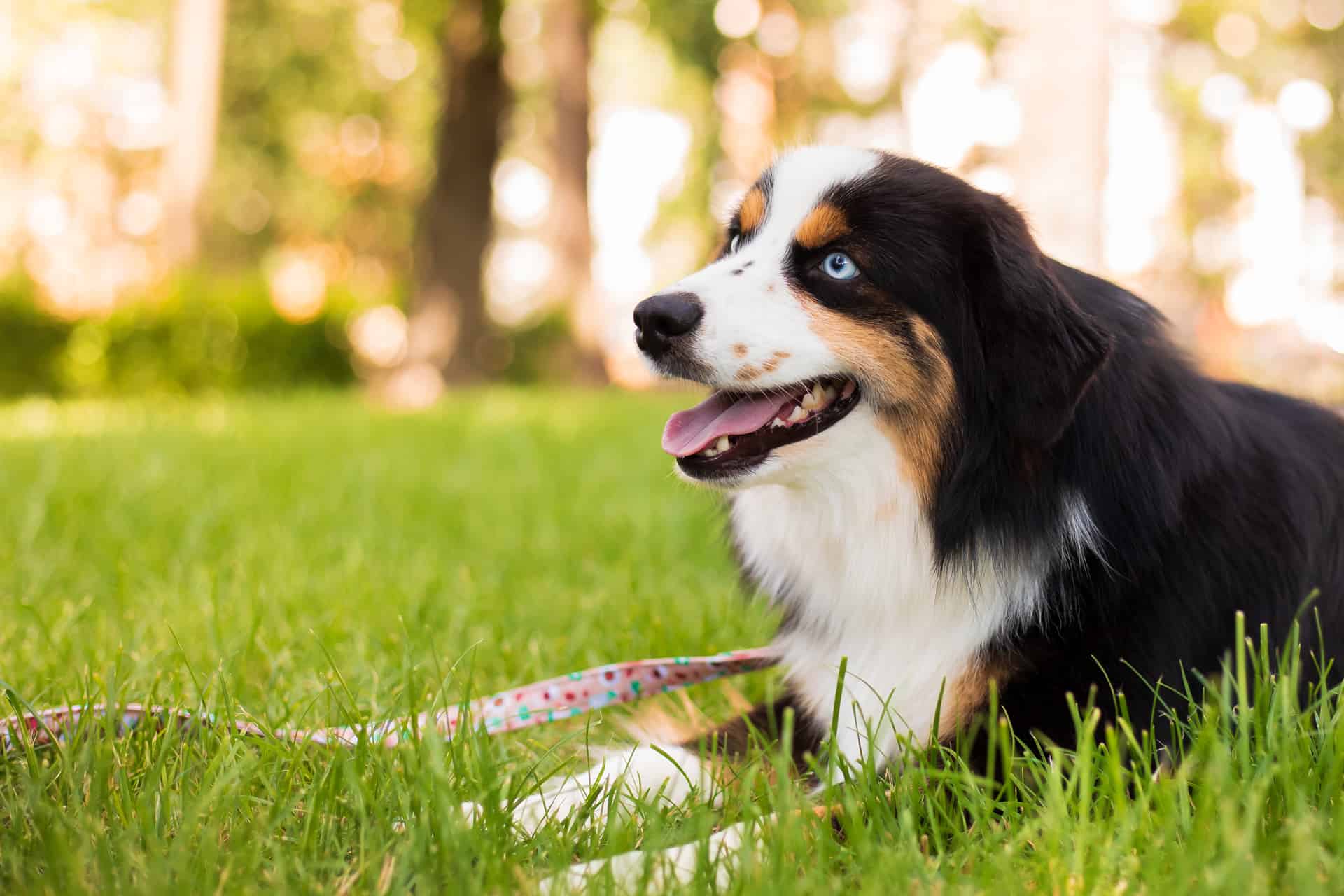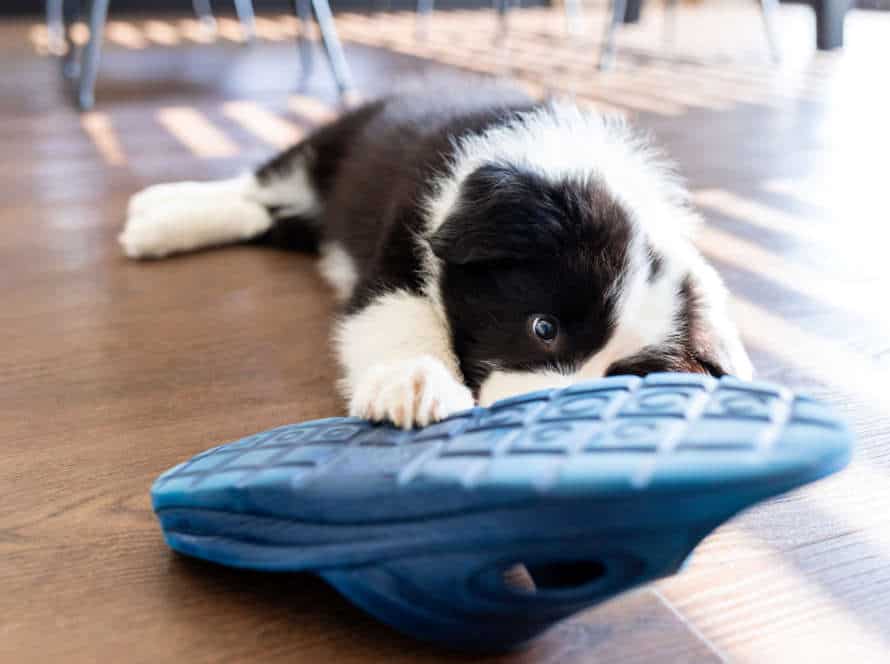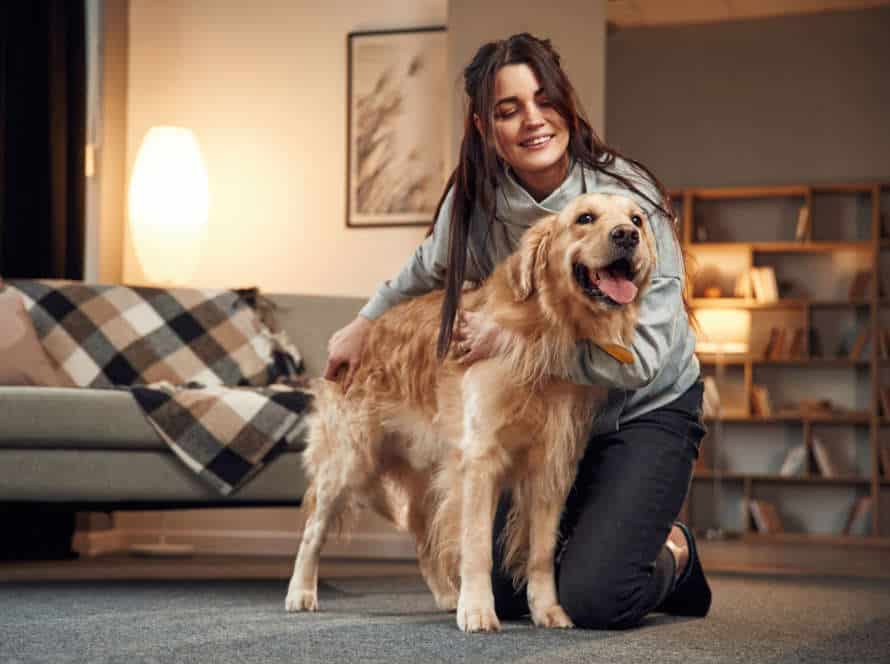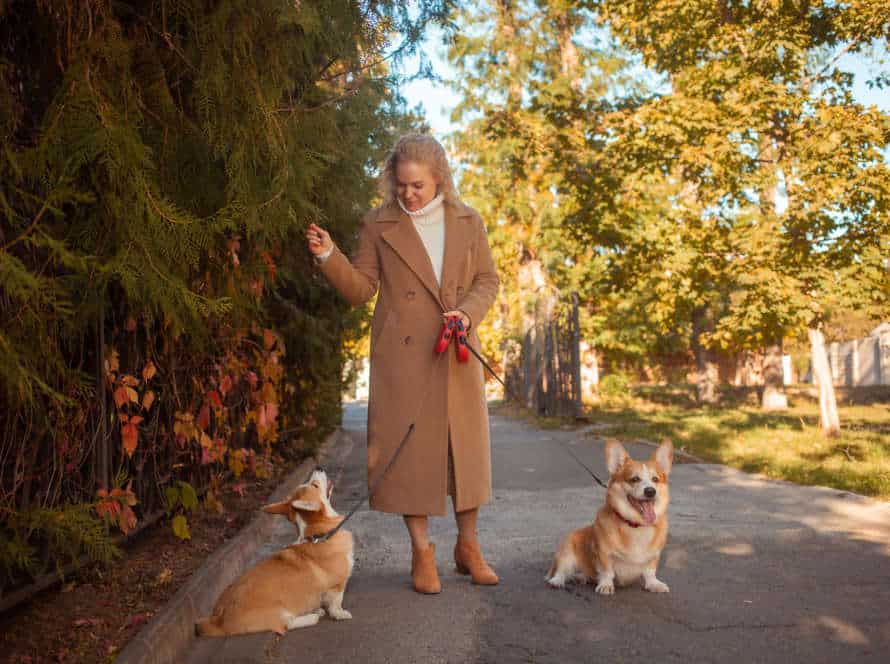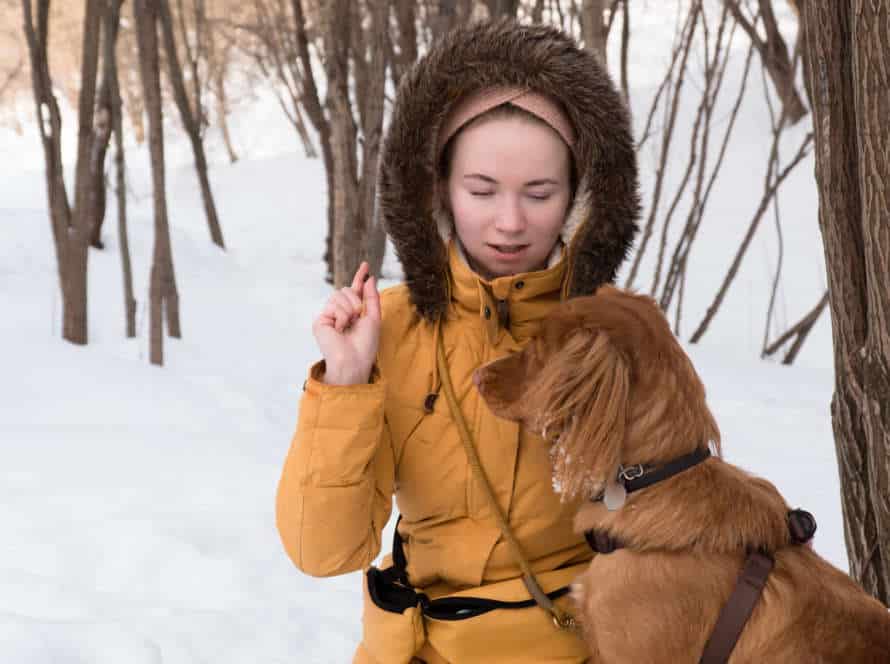How to Choose the Right Leash to Minimize Biting Opportunities
Choosing the correct leash for your pup is a major factor in reducing biting chances, especially when out for a walk. Here’s what to look for:
- Avoid retractable leashes. They let your dog move around too much and can result in bites.
- Opt for a 4-6 foot leash in materials like leather or nylon. This’ll provide more control.
- Make sure the leash has a comfortable grip handle. This way you can keep a firm hold, even if your dog makes sudden movements.
- Think about using a harness rather than a collar. This’ll stop choking and pulling.
By selecting the right leash, you’re helping to stop your pup from biting somebody when you’re out and about.
Understanding Leash Types
When picking a leash for your pooch, there are many to pick from in the market. Each has its own benefits and downsides. So, it’s important to grasp the pros and cons prior to buying. This part will assist you in understanding the various types of leashes and their features. Then, you can choose the most suitable one for your pup’s requirements.
Standard Leash
Standard leash is a top choice for walkers of pooches. It usually measures 4-6 feet and is made of leather or nylon. There’s a loop handle on one end and a metal clasp on the other. This type of leash gives you better control of your doggo. It also ensures they obey commands and stick close by while you stroll.
When selecting a standard leash, consider the size and weight of your pup plus the purpose of the walk. For well-trained dogs, a nylon leash works well. For stronger or aggressive dogs, leather works better. Also make sure the clasp is sturdy and won’t break easily.
Choosing the right leash can reduce biting risk, and keep your pup and others safe. Pro Tip – Always keep an eye on your dog and stay away from strange animals.
Retractable Leash
Retractable leashes are popular. But, they may up the chances of biting incidents. So, it’s important to be aware of the different leash types and pick the right one to reduce biting possibilities.
Retractable leashes have cords that can extend up to 30 feet. This might cause issues if the pup strays too far away from the owner. Also, the thin cord could wrap around someone or other dogs, leading to accidents.
Thus, it’s recommended to use standard 4-6 feet leashes, or longer ones for well-trained dogs. Leather or nylon are good materials for durability. Some leashes even have added padding for comfort. Additionally, the size, age, and behavior of your dog must be kept in mind while selecting a leash.
A suitable leash can help you dodge biting incidents and safeguard your pup when outside.
Slip Leash or Choke Chain
When it comes to keeping dogs from biting, selecting the right leash is key. Two leash types used for training are slip leashes and choke chains.
Slip leashes, also called “training leads”, tighten when pulled, allowing for fast correction. Choke chains go around a dog’s neck and constrict airflow, discouraging bad behavior.
Though choke chains can be harmful if misused, slip leashes are a gentler and safer option for training. It’s important to remember that good training techniques and positive reinforcement should always be used, no matter the leash.
Factors to Consider
Selecting the ideal leash for your pup is essential for curbing any potential biting. Different leashes serve diverse functions. It’s vital to comprehend the details that will help determine which leash is best for your pooch. We’ll look at the different factors to ponder when making your choice.
Breed
Picking the correct leash for your pup is key to curtailing biting chances, particularly for breeds famous for biting. Here are some things to mull over when selecting a leash for your pooch:
- Material: The leash should be made of tough materials, like leather or nylon, and be able to endure your dog’s strength and chewing habits.
- Length: The leash should be long enough to give your pup enough slack to move around comfortably, but not too much so they can’t get into unwanted situations.
- Width: The leash should be wide enough to guarantee a firm grip, stop tangling, and reduce the danger of rope burn.
- Type: There are various types of leashes, for example, retractable leashes, regular leashes, and slip leads. Choose one you’re comfortable managing and that fits your dog’s behavior.
- Handle: The handle should be pleasant to hold and make it effortless to control your puppy.
By considering these aspects, you can find a leash that pleases both you and your pup and lessen the risk of biting.
Size and Weight
When choosing the right leash to minimize biting opportunities while walking your pup, size and weight are key!
A leash too heavy or lengthy can be hard to control, leading to distance between you and your dog.
On the flip side, a leash too short or light can cause your dog to feel cramped and agitated. This can result in biting or other bad behaviors.
It’s advised to get a leash about 6 feet long. It should also be made of lightweight material that is comfortable for both of you.
By having the right size and weight, you’ll have better control over your pup’s movements and reduce the risk of biting or aggression.
Age and Temperament
Age and temperament are key when selecting the right leash. Younger dogs need a shorter leash to stay close to their owner and avoid dangerous situations. For older dogs, a longer leash gives more freedom.
Temperament is also important. An aggressive or easily agitated dog needs a thicker, sturdier leash. For calmer dogs, a lighter, more flexible leash allows for more movement.
When choosing a leash, consider age and temperament. This helps keep both you and your furry friend comfortable and safe.
Choosing the Right Length
Leashes come in different sizes and lengths. The size of your pup affects the length of the leash: it determines the freedom your pup has to explore, and potentially bite. Choosing the right size leash is key in minimizing biting opportunities. Let’s take a look at the different lengths of leashes and how they can help reduce the odds of biting.
Short Leash (4-6 feet)
A short leash (4-6 feet) is great for controlling and reducing biting chances, while walking or in training. It helps keep you close to your pup, so communication, feedback, and corrections are easier. Here’s why:
- Training Control: A short leash gives better control during instruction. Communication and corrections of bad behavior are simpler.
- Safety: Keeping your doggo on a short leash prevents them running into traffic or other hazardous situations.
- Less Tension: Prevents tension on the lead, reducing pulling during walks and making them more pleasant.
Pro Tip: Get a high-quality leash with a comfy handle. A shock-absorbing leash could help if there are sudden jolts or pulls.
Long Leash (8-30 feet)
Choosing the right leash for your pup is key. 8-30 feet long is perfect for a canine who needs more space to play. It offers more room and freedom, aiding in physical activity and brain stimulation.
But, it’s vital to keep an eye and be in control, especially in public places, to stop any biting.
Long leashes are great for training, too. They provide distance for commands like “come” and “stay.” Plus, they help with socialization and obedience courses.
When selecting a leash, think about your dog’s size and behaviour, the environment and any local laws. Always make sure your pup is safe.
Pro tip: Practice with a long leash in a fenced yard or in a controlled area first. That way, your pooch can handle the freedom and you can stay in control.
Choosing the Right Material
When selecting the ideal leash to reduce biting, the material is vital. Distinct materials have diverse textures, softnesses and weights that assist in handling a dog’s conduct. Some materials are more robust, which stops a dog from biting through the leash.
We’ll explore the particulars of the materials accessible, and which might be the most suitable for you and your pup:
Nylon Leashes
Nylon leashes are a great pick for dog owners due to their robustness, affordability and flexibility. However, it’s important to take the material into consideration when picking out a leash to reduce biting chances. Here are some tips:
- Get a shorter leash that keeps your pup close and prevents lunging or biting.
- Choose a leash with a comfy grip that allows you to maintain a firm hold and total control.
- Opt for a solid and high-quality nylon leash that can manage your pup’s power and playfulness without snapping or getting damaged quickly.
- Steer clear of a retractable leash as it gives less control and can be dangerous if your pup suddenly lunges or bites.
By selecting the right leash made of sturdy and durable nylon material, you can minimize biting opportunities and keep your furry buddy safe.
Leather Leashes
Leather leashes are a top pick for pup-owners! They’re strong, comfy, and look nice. When selecting the perfect leash material, consider your pup’s size, breed, and personality. Then think about the level of control you need. If your dog has a tendency to bite, a thicker leash with better grip is wise. Padded leather leashes provide comfort for both you and your pup without sacrificing any durability. They won’t stretch or break easy and come in lots of colors and sizes for different breeds.
When you choose a leash, be sure it’s the right length. Too short or too long leads can cause accidents or injuries. Pro Tip- Get a leash that matches your pup’s personality and temperament to make walks extra-enjoyable.
Chain Leashes
Chain leashes are a great pick for pet owners wanting something strong and long-lasting. When selecting the perfect chain leash material, there are a few points to take into account to reduce biting chances.
- Gauge: Chain leashes come in different thicknesses. The thicker the gauge, the sturdier the leash. It’s advised to pick a gauge based on your dog breed size and strength.
- Material: Stainless steel or iron are popular materials used for chain leashes. Stainless steel is rust-proof and works well for water-loving dogs. Iron is more affordable and tough.
- Coating: Chain leashes with rubber or vinyl coating are more pleasant for both you and your dog. The coating adds defense against biting and rust, and a comfy grip for you to hold on to during walks.
- Length: Chain leashes come in various lengths. It’s essential to choose a leash length that meets your training goals. A short leash is great for training, while a long leash gives more freedom for leash-free sessions.
Pro Tip: Use the chain leash carefully to avoid fatal injuries and bites to your dog or others. Invest in professional dog training to find out how to use the chain leash correctly.
Choosing the Right Handle
When choosing a leash for your pup, handle size and shape are key. A wide, comfortable handle can facilitate better control whilst walking and reduce the risk of biting. Let’s look at the benefits and drawbacks of different handles and how to pick the ideal one for your pooch.
Comfort and Grip
Choosing the right handle for your pup’s leash is key. It’ll provide comfort, grip, and minimize biting chances. Different handles exist, each with its own features and advantages.
- Standard Loop Handle: It’s the most popular option. It gives a sturdy grip for walkers. Perfect for pooches who pull.
- Traffic Handle: It’s a shorter grip situated near the clip. It gives more control in busy places or near hurdles. It’s ideal for dogs with biting issues or ones that walk in crowded places.
- Padded Handle: It provides extra support and comfort to dog-walkers, making long walks or runs more enjoyable. Great for pups with delicate skin or people with hand fatigue.
- Adjustable Handle: It lets owners adjust the length and grip to their liking. Perfect for those with multiple dogs or who switch between running and walking.
To reduce biting possibilities, go for a leash with a strong, high-quality construction that can handle pulling and tugging. Also, pick one that’s suitable for your pup’s size and power – this will see to maximum control and comfort for both you and your four-legged pal.
Padding and Cushioning
Padding and cushioning are essential when picking the perfect handle for your pup’s leash. This helps avoid any biting. Look for neoprene or padded nylon handles for added comfort and shock absorption.
The length of the leash should also be taken into account. Short leashes provide better control in crowded areas, while longer leashes give more freedom.
Always be present when your dog is on the leash. The right handle and leash length can go a long way in stopping biting and ensuring a secure and pleasant walk for both you and your furry pal.
Hands-Free Leashes
Hands-free leashes are awesome for dog owners who want control without using hands. Here’s how to pick the perfect handle for a hands-free leash and minimize biting chances.
Go for a bungee leash with an adjustable handle. It absorbs shock, perfect for dogs that pull or lunge. You can adjust the length according to different situations and avoid bites.
Choose one with a padded waistband. It feels comfy and distributes the weight equally, so no pulling or biting!
Pick one with a quick-release buckle. This helps you easily disconnect in case of emergencies.
Pro tip: Ask a professional dog trainer to pick the right leash and avoid anxiety or fear issues.
Adding Accessories for Safety and Control
Wanna limit your pet’s aggressiveness and biting? Get a secure leash! Quality leashes can help you keep control of your pet and reduce their chances of biting. Here’re a few things to consider when selecting the paw-fect leash.
Reflective Strips
Reflective strips are a must-have for pet owners who like to take their pups for a stroll in dimly lit or dark settings. These strips improve your pup’s visibility and keep them safe during night-time walks.
Here are some tips to pick and make use of the right reflective strip:
- Choose one that is long enough to wrap around your pup’s neck or waist snugly.
- Opt for a strip made of superior reflective material that shines from a distance.
- Avoid too-heavy or bulky strips, as they can weigh down your pet or limit their motion.
- Secure the strip at the front or back of your pup’s collar or harness, depending on how they walk.
- Make sure the reflective strip is visible from all directions and facing out.
Pro tip: A reflective strip is a great way to protect your pet while letting them enjoy the outdoors. Invest in a top-notch strip and ensure your pet stays visible and safe all the time, particularly in low-light situations.
Traffic Handles
Traffic handles are handy for dog owners wanting more control, safety, and comfort when out and about with their pooch. They’re lightweight, ergonomic and provide a secure grip close to the collar or harness. This way, you can quickly and easily manage your pup’s movements and behaviour.
If you want to reduce your pup’s biting chances, look for leashes with built-in traffic handles. These can help you keep your dog close and in control during unexpected encounters. Pick leashes made of durable and non-toxic materials like nylon, leather, or cotton. Reflective stitching or fluorescent colours increase visibility and safety in low-light areas.
Remember to choose the right leash length and type based on your dog’s size, strength, and activity level. Supervise them at all times to prevent accidents or injuries.
Pro Tip: Use a traffic handle to teach basic obedience commands like ‘sit’, ‘stay’, or ‘heel’. Reward them with treats, praise, or toys for good behaviour.
Double-Ended Leashes
Double-ended leashes are perfect for controlling and protecting your pup from biting. One end attaches to the collar or harness and the other to a handle or belt. Here are some things to consider when choosing one:
- Length: Pick the right size based on your dog’s size, behaviour and activity level. Longer ones are good for a pup that needs more freedom, while shorter ones are better for training.
- Material: Opt for a strong and comfortable fabric like nylon or leather. Easy to clean and maintain.
- Safety features: Look for reflective stitching, padded handles and anti-tangle features for extra safety and convenience.
- Design: Choose one with a design that meets your needs and preferences. Some have a sliding function to adjust the length and others have two handles for better control.
Selecting the right double-ended leash will give your furry friend safety and comfort, whilst making sure their behaviour is in check.
Conclusion: Making the Best Choice for Your Dog.
Finding the perfect leash for your pup is key in avoiding biting and keeping them safe. The leash you pick depends on your dog’s size, behavior, and training needs. Here are some types and their advantages:
- Standard Leash: This is the most common leash. It comes in different lengths and materials like nylon and leather. It provides good control, which makes it great for training and unfenced areas.
- Retractable Leash: Retractable leashes let pooches have more freedom but still under your control. With its lock and release feature, owners can manage their pup’s distance, making it less likely for them to reach other animals.
- Head Halter: Dogs who pull or have aggressive tendencies benefit from head halters. It fits around the nose, giving more control to the pet parent. By limiting the dog’s movement, owners can keep their dogs away from biting chances.
Ultimately, the leash you choose should help you keep them in check while keeping them comfy and safe.
Frequently Asked Questions
Q: What type of leash is best for minimizing biting opportunities?
A: A short leash, such as a 4-6 foot leash, is recommended for minimizing biting opportunities.
Q: Should I use a retractable leash for my dog?
A: No, retractable leashes should be avoided as they give the dog too much freedom, making it difficult to control their actions and minimizing biting opportunities.
Q: What material should I look for in a leash?
A: Strong and durable nylon or leather leashes are recommended for minimizing biting opportunities. Avoid thin, weak, or easily chewable materials.
Q: Is there a certain style of leash that is better for minimizing biting opportunities?
A: A flat or martingale collar and a standard leash are recommended for minimizing biting opportunities. Avoid choke or prong collars, as they may lead to aggressive behavior.
Q: Can I use a harness instead of a collar and leash to minimize biting opportunities?
A: While harnesses can be effective for some dogs, they can also make it easier for a dog to pull, jump, and bite. A collar and leash are still the recommended option for minimizing biting opportunities.
Q: How can I make sure my dog doesn’t bite while on a leash?
A: Proper training and socialization are key to ensuring a well-behaved dog on a leash. Avoid situations that may trigger aggressive behavior, and always monitor your dog’s interactions with people and other animals while on a leash.

